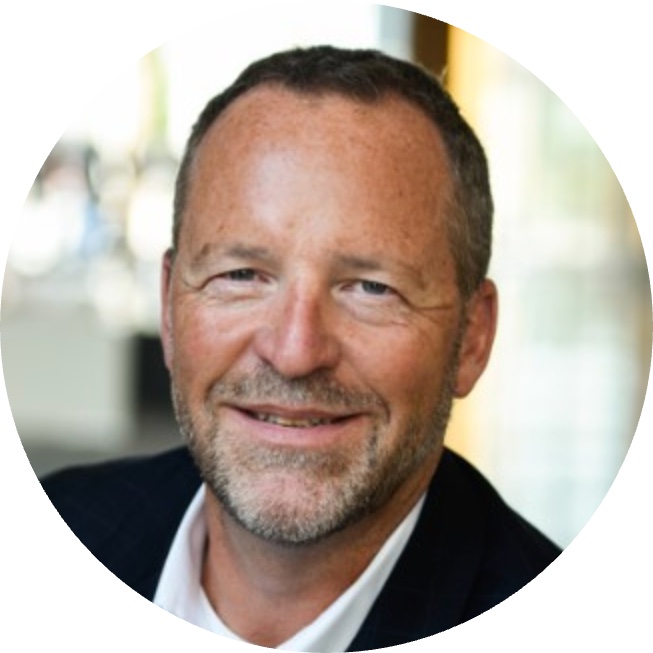Inside the Quiet Workplace phenomenon: What leaders need to know

This article is part of WorkLife’s Quiet Workplace Guide, that delves into the quiet working trend, and why leaders need to look beyond the buzzwords to the deeper people-engagement challenges behind them. More from the series →
To the general public it may be known as “quiet quitting” but within organizations the more familiar watch word is a little different: “disengagement.” The two terms are, however, one and the same.
Gen Z workers kicked off a viral phenomenon when they began making TikTok videos last summer about their rejection of hustle culture and the age-old accepted working norm of going above and beyond, dubbed quiet-quitting.
The term sparked controversy: Just how okay is it to push back on overdelivering in a job, to stave off burnout? It also led to multiple spin-offs: quiet firing followed quick on its heels, as did quiet constraint, quiet hiring, quiet promotions, quiet caregiving.
New terms, old concepts. “It’s [quiet quitting] a term or combination attached to a psychological state that’s existed for a long time,” said Dr. Jim Harter, chief scientist of workplace and well-being at Gallup. But the Quiet working buzzwords caught like wildfire because they spotlighted a far more recent trend: People wanted to re-examine what a healthy work-life balance looks like.
“People emerged from their Covid experience feeling isolated. It’s somewhat associated with what we saw in the U.S with the great resignation and reshuffling of workers – there was this pent-up discontentment that had already existed but people had a chance to sit back and think about what they wanted their work to be,” said Harter.
However, experts believe this pent-up discontentment within workforces, was not solely caused by the pandemic, but like many work trends, was magnified by it. Matt Summers, global vp of leadership at the NeuroLeadership Institute, believes the repressed disengagement felt by workforces was an inevitable consequence of senior management’s neglect of human capital, spread over many years.
“Organizations are not spending money on people, but business outcomes. They invest in assets but not human assets,” said Summers. “The Quiet phenomenon that we’re seeing is a byproduct of the fact we have ignored our investment and development in human capital,” he added. “I would argue that this is the central, single thing that has prevented organizations from moving beyond the post pandemic era into the new era.”
To burrow even deeper into this, it’s worth looking at how financial accounting – the scorecard which tells a business how well it’s doing – treats employment costs, a topic recently dissected by Peter Capaldi, professor of management at the Wharton School for Harvard Business Review. “Despite all the rhetoric about ‘investing in our people,’ training and development aren’t considered investments; they’re categorized as a current expense, a type of fixed cost – just as carpeting is,” he wrote. So are other employment costs such as wages, and salaries, he further explained. “In short, the financial accounting system distorts business decisions in ways that are worse for everyone — investors, employers, and employees.”
But there is a mindset shift occurring among senior leadership, albeit less urgently than it perhaps should.
Historically, most CEOs regarded people-centric strategy as the somewhat fluffier domain of HR departments. But the tumultuous years of the pandemic and the strain it put on businesses, followed by the great resignation, made CEOs painfully aware that talent retention needed to pole vault up their strategic priorities list.
Ask a CEO what their top priorities were five year ago, and the answer likely skewed toward digital transformation, portfolio management, profit margins and other commercial business outcomes. Today, those have to make way for more talent-centric goals. In fact, the top three concerns for the majority of CEOs are attracting and retaining top talent, developing the next generation of leaders, and managing an engaged workforce, according to a 2023 global leadership report from management consultancy Development Dimensions International.
Sarah Robb O’Hagan, CEO of corporate well-being consultancy Exos, remembers well how different the focus on C-suite skills was when she ran large divisions for various Fortune 50 companies. Between 2008 and 2012 she was president of Pepsico’s sports drink Gatorade, a $5 billion business. “When I thought about what I needed to know as a leader, it was technical skills like finance, marketing, negotiation,” she recalled. “Now I tell leaders all the time – the first thing you need to be educated on is how you build a culture that enables people to really thrive and be productive and feel awesome, because this new hybrid world has thrown everything out of whack,” she said.
If leaders don’t understand how to build that kind of culture right off the bat, they won’t see how to increase the capacity of employees to handle this new stressful workplace, she added. “Typically these issues were an HR problem. Now it’s not just the CEO’s, but all division heads. You have to take responsibility for the well-being and capacity of your team.”
Hybrid-management upskilling needed
The quiet-working trend highlighted a troubling trend of separation that’s emerging between employers and their employees, one that’s backed up by Gallup data. And Harter believes poor management is one of the root causes for it.
That is another legacy issue. Historically, people have gotten promoted to manager roles because they have excelled in their individual roles, or have been around a long time. Not because they would make strong people managers. And hybrid working setups have forced these kinds of organizational challenges to resurface.
People are coming and going in different ways. They’re not all in the office at one time so there isn’t that predictability or cadence to when people come together. That increases the complexity for managers and the risk of people becoming detached, stressed Harter. Add in the plethora of digital communication tools we’re all juggling, and the frequency of miscommunication rises. “The role of managers has never been as important as it is right now,” added Harter.
And that means, it’s equally important that organizations change how they select managers for promotion, he advised. A manager needs to have an ability to motivate people and look forward to dealing with the idiosyncrasies of others. Are they good at inspiring people but also holding them accountable? Can they take on difficult situations and manage them effectively? Are they good at bringing the right kind of information to people so they can do their jobs effectively, communicate well and make decisions effectively? These are the kinds of questions organizations need to review when promoting people to management roles.
Many mangers have historically accepted promotions because they are the natural progression to higher compensation, enabling them to climb the corporate ladder. Some companies have recognized this is no longer a sustainable model that will help their businesses thrive. But for other, especially large legacy businesses, it takes a long time to overhaul such embedded structures and promotion culture.
There are online talent assessment tools that can help with this. For example, Gallup has one called Clifton Strengths, which is being used by its clients to understand managers’ strengths and tendencies, as well as those of the people they manage. Tools like this are helping managers to lead and help their direct reports to leverage their strengths and become more engaged with their work, said Harter, who added that around 30 million people are currently using this tool across various organizations.
“You might have between five and 10 people in a team, and they all come with different traits. You need to understand those traits and tendencies if you’re going to manage them effectively,” added Harter. And that goes double for knowing which people will work more effectively remotely, and which need more in-person connection. “When people come to work confused, they’re going to be more likely to be in that kind of psychological framework of ‘the company doesn’t care about me, why should I care about them?’,” added Harter.
Getting employee buy-in
While most leaders have accepted, if not embraced, the need for change, some secretly hope that a recession will swing the pendulum back to the previous status quo. But to stay ahead of the employee disengagement trend, and ensure it doesn’t spread further, leaders need to be intentional about addressing it, not bury it under the rug, stressed Cali Yost, CEO and founder of workplace consultancy Flex+ Strategy Group.
“The pandemic accelerated people-related challenges that were always there, but can no longer be ignored in a talent shortage that isn’t going to change even with a recession,” she said. And in a work reality that has been fundamentally transformed, people don’t necessarily want to work the way they worked before. “But they want to be invited into the thinking about the way an organization is going to operate going forward. And until we do that people are going to quiet quit and managers are not going to be able to get the most out of their workforce, added Yost.
While remote and hybrid setups attract their fair share of blame for any drops in productivity, Yost believes it’s the execution of such models that are at fault.
“What we’ve experienced in the last three years is a crisis-driven suboptimal execution of flexibility,” said Yost. “We’re not optimized in how we use technology to communicate and coordinate with each other. So it’s a mess. And that needs to be thought through and intentional. That would go a long way.”
The way we coordinate across different workplaces also isn’t happening efficiently and we haven’t figured out what we’re doing when we’re in the office together, she added. That’s going to inevitably lead to frustrations. “You’re going to have people quit,” she added. “Then you’re going to have people you hire who aren’t going to be wanting to work five days a week in an office all the time. They’re going to have the same desires as the people you just let go because you didn’t engage in the process.”



